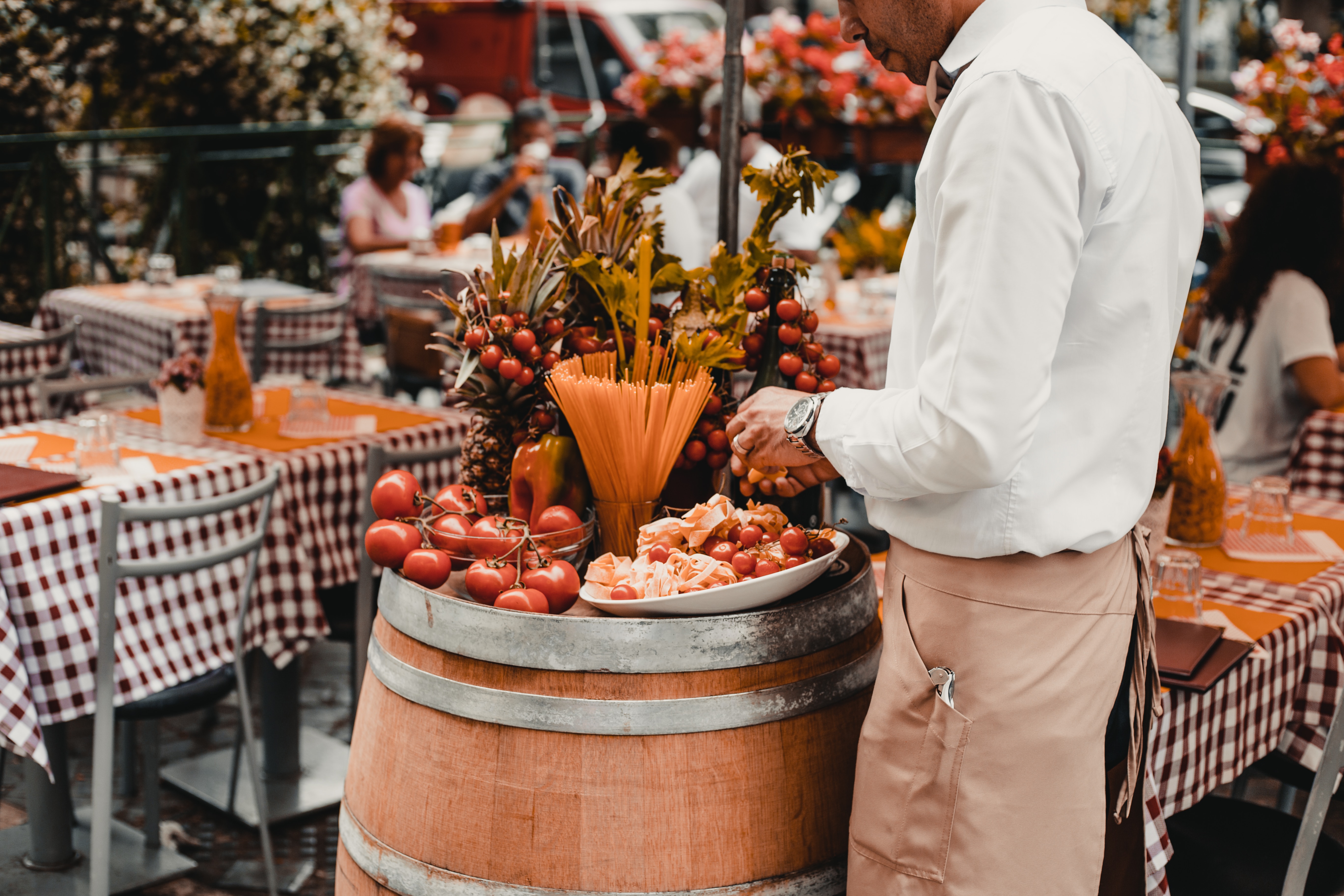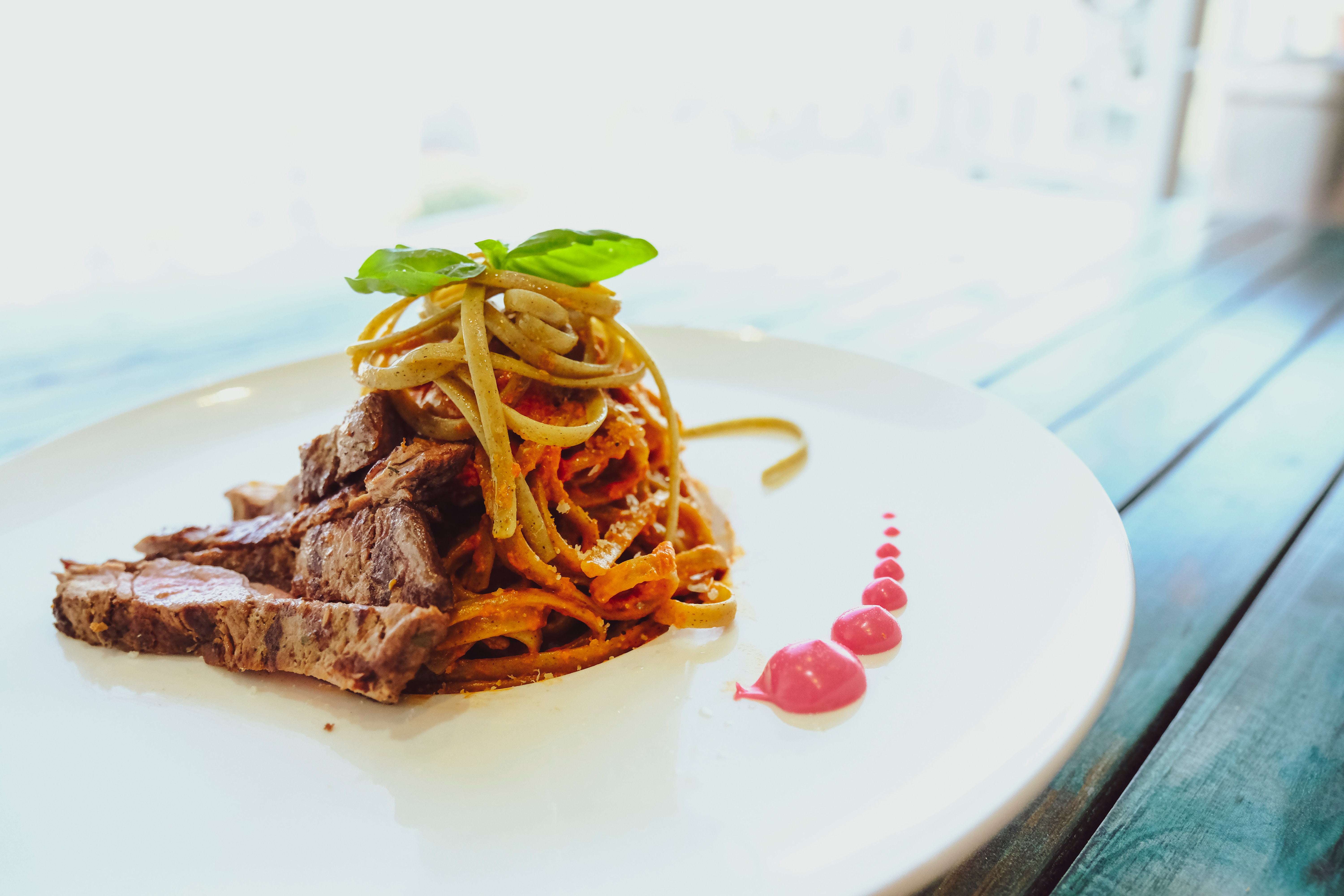In our “Dinner In…” series, we take you around the world for dinner. This week, join us as we gather at a Roman piazza, where candles burn, cutlery scrapes against plates, glasses clink in celebration, and chatter carries through the warm air, well into the evening. Those who have the privilege of dining in Italy aren’t likely to forget it. If you’d like to eat dinner in the easy, relaxed tradition of a true Italian, here’s how to approach it.
The Culture of Dinner
Eating in Italy is not like eating in other places. It’s often a social occasion for family and friends, and can take place over the entirety of an evening. Even as a foreigner in an Italian restaurant, you’ll find that many places welcome you in with warmth and familiarity. To truly do a real dinner in Italy, plan to spend more of the evening talking than you do eating. Whether you’re out with friends or on a solo trip, you’ll want to linger over a meal for hours, savoring each course.

Understanding Italian Dinner
Customarily, Italian dinner (cena) comprises several courses:
- Antipasto - food offered before the meal begins, usually selected for how well it complements the meal to come
- Primo - the first course, usually pasta, soup, polenta, risotto, or rice
- Secondo - the main course, meat or fish
- Insalata - greens served after the main course, sometimes accompanied by other vegetable side dishes called contorno
- Formaggi e frutta - cheese and fruit
- Il Dolce - dessert sweets, like gelato, cake, tiramisu, or cannoli
- Caffè - Coffee, if you’re really Italian you’ll make it an espresso
- Digestivo - the small glass of liquor that aides digestion at the end of the meal
Common Questions for the Restaurant
The first thing you’ll be asked at an Italian restaurant is, “Quanti?” It means “how many”, and you can answer the number of people you’ll be dining with: uno, due, tre, quattro, cinque, etc.
Once you’re seated, an Italian waiter will usually ask, “Da bere?” That means “to drink?” Most often, Italians drink either flat or sparkling water, as well as red or white wine.
- “Un litro d’acqua frizzante” – a litre of sparkling water
- “Un litro d’acqua minerale” – a litre of flat water
- “Un litro de vino rosso della casa” – a litre of house red wine
- “Un litro de vino bianco della casa” – a litre of house white wine
Next, you can expect the waiter to ask you, “Da mangiare?” It means, “to eat?” You can answer back, “Vorrei…” (I would like) and then the food you’re planning to order. To be more casual, you can say “Prendo…” (I’ll have) or “Facciamo…” (Let’s do).
For extra credit, you can use a longer sentence like: “Per primo, prendo spaghetti alla carbonara” (For the first course, I’ll have spaghetti alla carbonara).
If you’re not sure what you’d like to order, you can always ask the waiter. Simply say, “Cosa ci consiglia?” (What do you recommend?). If you need more time, try saying, “Non lo so ancora” (I don’t know yet).
Most people will order a few courses in the order shown above, and then enjoy them over the course of an evening. When it’s all over, to get the check, you’ll ask, “Il conto, per favore” (the check, please!).

Essential Vocabulary for Italian Dinner
Questions and Commands
- Sì, prego? - Yes, please?
- Mangia! - Eat up!
- Che cosa vi porto? - What can I get you?
- Cosa ci consiglia? - What do you recommend?
- Non lo so ancora - I don’t know yet
Drinks
- Succo - Juice
- Birra - Beer
- Vino - Wine
- Tè - Tea
- Latte - Milk
- Caffè - Coffee
Foods
- Carne - Meat
- Pollo - Chicken
- Pesce - Fish
- Manzo - Beef
- Maiale - Pork
- Aglio - Garlic
- Spinaci - Spinach
- Zucchine - Zucchini
- Patate - Potatoes
- Zuppa - Soup
- Riso - Rice
- Salsa / Sugo / Condimento - Sauce
Buon Appetito! If you’re feeling hungry...for more Italian, why not brush up with a Fluent City class that fits your budget and schedule? Find out more.

 Spanish
Spanish
 French
French
 Italian
Italian
 Arabic
Arabic
 Portuguese
Portuguese
 German
German
 Chinese
Chinese
 Japanese
Japanese
 Russian
Russian